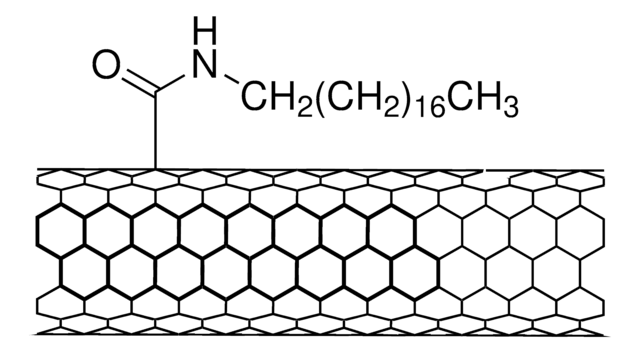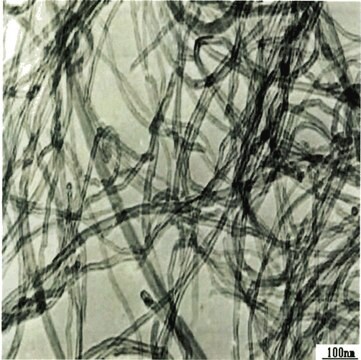652490
Carbon nanotube, single-walled
carboxylic acid functionalized, >90% carbon basis,D × L 4-5 nm × 0.5-1.5 μm , bundle dimensions
Synonym(s):
SWNT, carboxylic acid functionalized
About This Item
Recommended Products
Product Name
Carbon nanotube, single-walled, carboxylic acid functionalized, >90% carbon basis, D × L 4-5 nm × 0.5-1.5 μm , bundle dimensions, avg. no. of layers, 1
Quality Level
Assay
>90% carbon basis
form
powder
feature
avg. no. of layers 1
extent of labeling
1.0-3.0 atom% carboxylic acid
D × L
4-5 nm × 0.5-1.5 μm , bundle dimensions
impurities
5-8% metals
solubility
H2O: dispersible 0.1 mg/mL
DMF: dispersible 1.0 mg/mL
functional group
carboxylic acid
Related Categories
General description
Application
Packaging
Physical properties
Preparation Note
Analysis Note
Signal Word
Warning
Hazard Statements
Precautionary Statements
Hazard Classifications
Eye Irrit. 2 - STOT SE 3
Target Organs
Respiratory system
Storage Class Code
11 - Combustible Solids
WGK
WGK 3
Flash Point(F)
Not applicable
Flash Point(C)
Not applicable
Personal Protective Equipment
Choose from one of the most recent versions:
Already Own This Product?
Find documentation for the products that you have recently purchased in the Document Library.
Customers Also Viewed
Articles
Carbon nanotubes are materials that possess remarkable properties and offer extraordinary possibilities.
Carbon-based Sustainable Organic Electronics (SOE) limit the use of critical elements and biodegrade at their end-of-life. This review offers insight on how structural and energy disorder in these materials influence device performance and includes evaluations of various transport models and their limitations.
Dr. Xiang’s and Maruyama’s review presents the most recent research activities on 1D vdWHs, including the candidate materials, the synthetic techniques, and characterization methods. The optoelectronic applications are discussed in detail for different constructions of the 1D vdWHs-based devices (FETs, sensors, LEDs, photovoltaic devices, and light detection). Some challenges and perspectives for future development and applications of 1D vdWHs are also proposed to conclude the review.
Carbon nanotubes (CNTs) have received much attention since their discovery in 1991 by Sumio lijima1 due to their excellent mechanical, electrical, and optical properties.
Global Trade Item Number
| SKU | GTIN |
|---|---|
| 652490-1G | 4061835515547 |
| 652490-250MG | 4061835512058 |
Our team of scientists has experience in all areas of research including Life Science, Material Science, Chemical Synthesis, Chromatography, Analytical and many others.
Contact Technical Service









